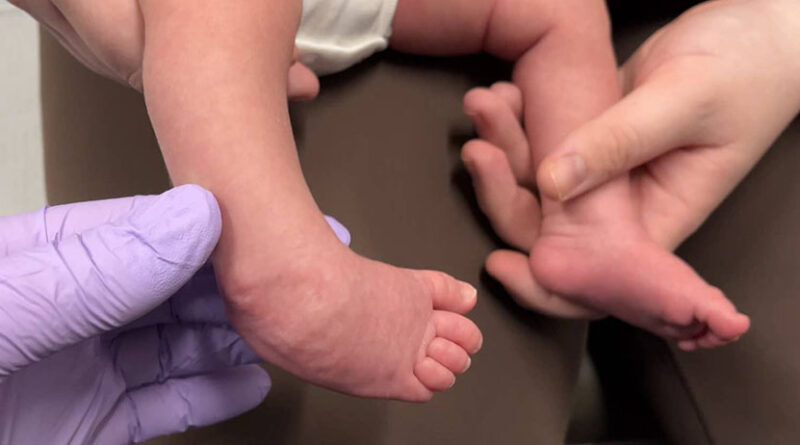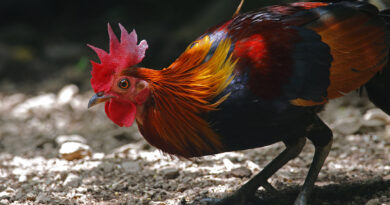Early Care Key to Preventing Clubfoot Disability
Early Treatment Vital to Prevent Disability in Children With Clubfoot — Surgeons
Orthopedic surgeons in Nigeria have stressed that early diagnosis and treatment remain the most effective way to prevent lifelong disability in children born with clubfoot. They warned that harmful cultural myths, spiritual interpretations, and delayed presentation continue to deny thousands of Nigerian children access to timely care.
Myths Are Fueling Delayed Treatment, Experts Warn
Many families still attribute clubfoot to spiritual attacks, witchcraft, or divine punishment—beliefs that specialists say worsen the condition and increase the likelihood of disability.
Surgeons emphasized that clubfoot is a medical condition, not a spiritual issue, and when treated early, full correction is possible.
Untreated clubfoot, they noted, leads to chronic pain, difficulty walking, social stigma, and reduced access to education and economic opportunities.
What Exactly Is Clubfoot?
According to the Cleveland Clinic, clubfoot is a congenital condition in which a baby’s foot—or both feet—turn inward due to shortened and tight tendons. It is one of the most common congenital foot deformities, affecting one in every 1,000 newborns globally.
In Nigeria, an estimated 10,000 babies are born with clubfoot annually (Nigeria Clubfoot Treatment Partners).
Although its exact cause is unknown (idiopathic), factors such as genetics, smoking, alcohol intake, certain medications, and family history may increase risk.
‘Clubfoot Is Treatable’ — Prof. Mike Ogirima
Professor of Orthopaedic and Trauma Surgery, Mike Ogirima, explained that most clubfoot cases (80–90%) fall under the idiopathic or congenital type. While some cases develop after birth due to infections, trauma, or poliomyelitis, these secondary forms are also treatable once the underlying cause is identified.
Read Also: Nigeria’s Children at Risk from Climate Change
Ogirima emphasized that modern treatment no longer relies on surgery. Instead, the globally accepted Ponseti method, which uses gentle serial manipulation and casting, offers up to 95% correction when started early—ideally from the first day of life.
“Treatment is easier from day one. After four to five weeks of serial manipulations, even severe cases can be corrected,” he said.
Late Presentation Still a Major Challenge
Despite awareness campaigns, many Nigerian parents still seek help late due to stigma, myths, and reliance on traditional bone setters.
Prof. Ogirima expressed concern that adults still present with deformed feet as a result of childhood neglect. Late presentation often means:
-
Higher cost of treatment
-
Longer treatment duration
-
Possible need for surgical correction
-
Higher chances of long-term disability
He advised pregnant women to avoid alcohol, radiation exposure, and non-prescribed drugs, especially in the first trimester, to reduce the risk of congenital deformities.
10,000 Nigerian Children Affected Yearly — Amaraegbulam
Dr. Peace Amaraegbulam, Consultant Orthopaedic Surgeon and President of Nigeria Clubfoot Treatment Partners, described clubfoot as the most common musculoskeletal birth defect.
“In Nigeria, over 10,000 children are born with this condition each year. Without treatment, walking becomes extremely difficult and painful as children walk on the sides of their feet. This leads to discrimination, stigma, and loss of opportunities,” she said.
Her organisation works with hospitals and NGOs to provide early identification, free treatment support, and parental education.
Early Treatment Saves Children From Lifelong Disability
Both surgeons strongly encouraged parents, caregivers, and healthcare workers to:
-
Present newborns early for examination
-
Reject myths and misconceptions
-
Avoid traditional bone-setter interventions
-
Seek treatment only from trained orthopedic specialists
With timely intervention, children born with clubfoot can live completely normal, healthy lives, free of stigma, disability, or limitations.
Content Credit | Olaoluwa Ayomide
Image Credit | pediatricfootankle.com




